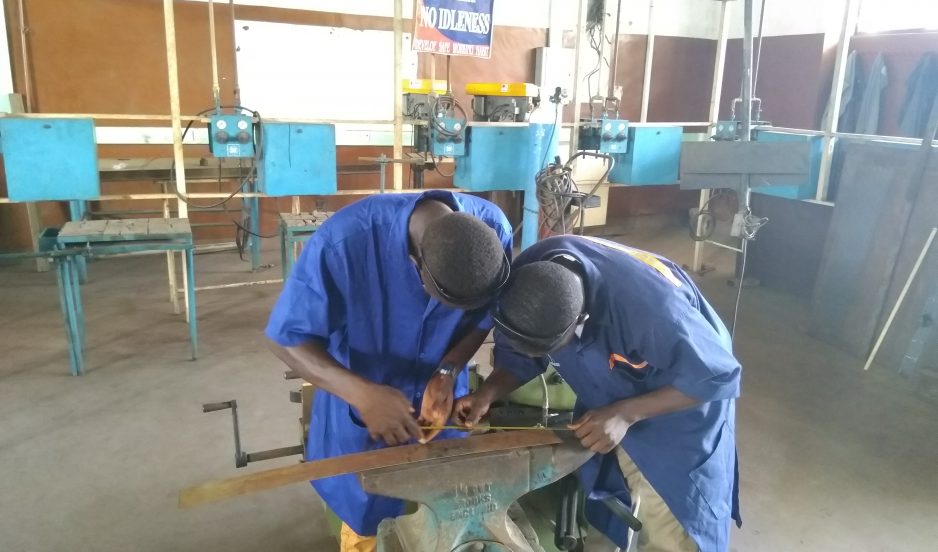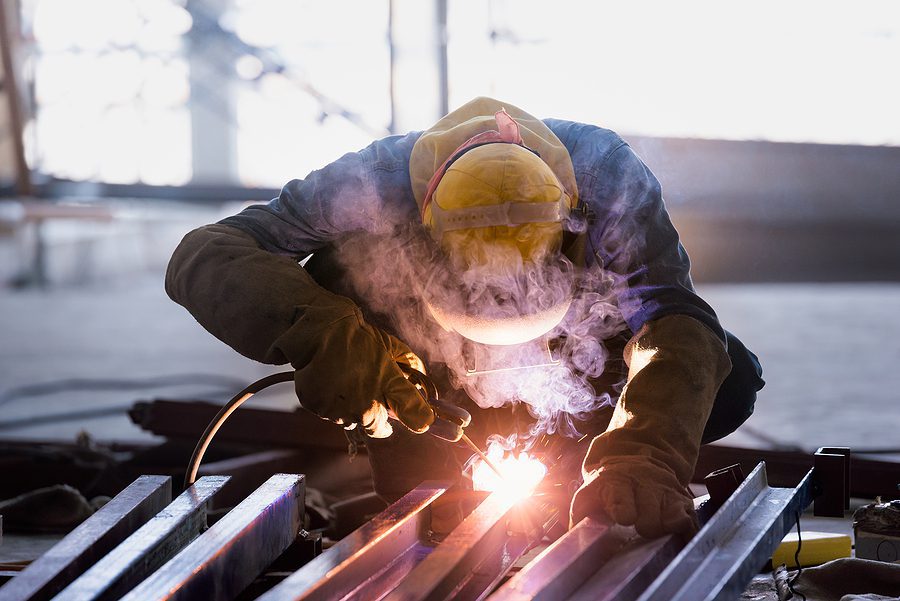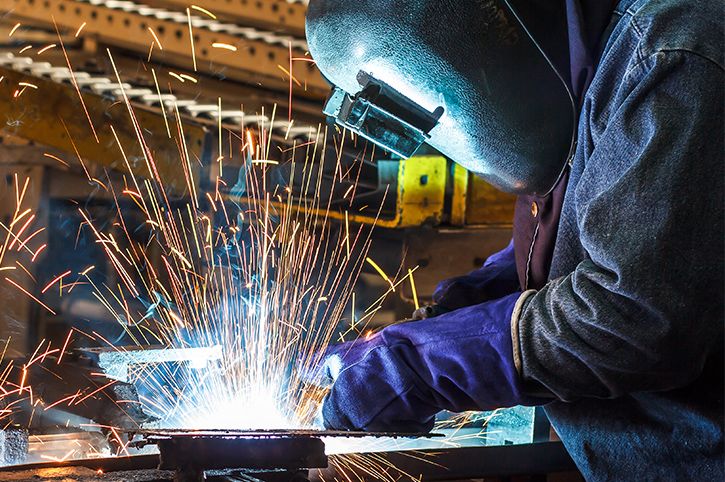Usual Welding Repair Service Issues and Exactly How to Address Them Efficiently
Welding repair work often experience an array of issues that can threaten the honesty of the final item. Usual issues include inadequate penetration, porosity, and misalignment, amongst others. Each issue presents special challenges that require certain approaches for resolution. Understanding these concerns is essential for welders intending to boost their outcomes and skills. This conversation will check out these common welding repair work concerns and reliable techniques to resolve them.
Insufficient Penetration
Inadequate penetration takes place when the weld steel falls short to totally fuse with the base material, leading to weak joints and possible architectural failures. This concern usually originates from inadequate warmth input, incorrect electrode angle, or inappropriate welding rate. Welders may run into poor penetration because of a mistake of the essential parameters for a particular material density or kind. Furthermore, contamination on the base product's surface can impede effective bonding, worsening the trouble. To resolve poor penetration, welders must ensure suitable settings on their devices and preserve a clean job surface. Regular assessment of welds is suggested to identify any deficiencies early, permitting for timely modifications and the avoidance of endangered architectural stability in welded settings up.
Porosity
Porosity is an usual issue in bonded joints that materializes as small gas bubbles trapped within the weld steel. This problem can compromise the honesty of the weld, causing decreased strength and possible failing under stress and anxiety. Belgrade. Porosity normally arises from contamination, dampness, or inappropriate welding strategies, which permit gases to get away into the liquified weld pool. To address porosity, welders should ensure proper surface preparation, maintain a clean workplace, and use suitable welding specifications. Furthermore, picking the best filler material and shielding gas can reduce gas entrapment. Regular inspection and testing of welds can aid determine porosity early, ensuring timely rehabilitative actions are taken, thus maintaining the quality and integrity of the bonded framework
Imbalance
Misalignment in welding can arise from various factors, consisting of improper setup and thermal expansion. Understanding the source is necessary for effective resolution. A number of modification methods are readily available to realign components and ensure architectural stability.
Reasons for Imbalance
Welding misalignment usually stems from a range of underlying issues that can compromise architectural stability. One primary reason is incorrect fit-up of elements before welding, which can result in voids and unequal surfaces. Variations in thermal growth during the welding process can also cause distortion, specifically if the products being signed up with have various coefficients of growth. Additionally, poor securing and fixturing may fall short to hold elements securely in position, resulting in movement throughout welding. Improperly conserved tools, including welding makers and tools, may introduce disparities in the weld bead, further adding to misalignment. Operator mistake, stemming from insufficient training or experience, can also play a substantial duty in producing misaligned welds.

Modification Strategies Readily Available
Dealing with misalignment efficiently requires a combination of corrective strategies customized to the certain problems available. One common approach is using jigs or fixtures to hold components in the correct position during welding, ensuring constant positioning. In addition, pre-heating the materials can help in reducing distortion and improve fit-up. For substantial misalignment, mechanical realignment strategies, such as making use of hydraulic jacks or clamps, can be used to correct the placement prior to welding. Post-weld warmth treatment might likewise be essential to ease anxieties brought on by imbalance. Mindful examination and modification during the setup stage can protect against misalignment problems from coming to be substantial problems, promoting a smoother welding procedure and boosting general structural integrity.
Distortion
Distortion is a common difficulty in welding that can emerge from different variables, consisting of unequal cooling and heating. Comprehending the root causes of distortion is important for implementing reliable avoidance techniques. Addressing this issue not only improves architectural honesty but also improves the overall quality of the weld.
Reasons of Distortion
When based on the intense warm of welding, products commonly go through adjustments that can bring about distortion. This phenomenon mostly emerges from thermal expansion and contraction during the welding process. As the weld area warms up, the product broadens; upon air conditioning, it acquires, which can create internal stresses. Additionally, irregular home heating across a work surface can worsen these tensions, leading to warping or flexing. The sort of material likewise plays a considerable duty; steels with differing thermal conductivity and coefficients of expansion might react differently, bring about unforeseeable distortions. Furthermore, inadequate joint style and inadequate fixturing can contribute to misalignment throughout welding, raising the chance of distortion. Recognizing these reasons is crucial for efficient welding fixing and prevention methods.
Prevention Techniques
Reliable avoidance strategies for distortion throughout welding concentrate on regulating heat input and making certain correct joint layout. Maintaining a consistent warm input assists to minimize thermal growth and contraction, which can bring about distortion. Utilizing methods such as preheating the work surface can additionally minimize the temperature level slope, advertising uniform home heating. Additionally, picking proper joint designs, such as T-joints or lap joints, can enhance security and minimize stress focus. Applying appropriate fixturing to secure the workpieces in place further help in preserving alignment during the welding process. Staggered welding sequences can disperse warmth more evenly, avoiding localized distortion. By using these strategies, welders can significantly lower the possibility of distortion and enhance the overall quality of their welds.
Fracturing
Cracking is a typical issue experienced in welding repair work, usually arising from numerous factors such as improper air conditioning prices, product choice, or poor joint prep work. The event of fractures can considerably craftsman wire feed welder compromise the stability of the weld, bring about possible failures throughout operation. To address this problem, welders need to first assess the origin creates, making certain that products are suitable and suitably selected for the certain application. Furthermore, managing the cooling price during the welding process is crucial; rapid air conditioning can generate stress and anxiety and bring about cracking. Correct joint design and prep work also add to minimizing the danger. Implementing these techniques can enhance weld high quality and durability, inevitably decreasing the chance of cracking in completed weldments.

Incomplete Blend
A substantial problem in welding repair services is insufficient blend, which happens when the weld metal does not properly bond with the base material or previous weld passes - Welding. This flaw can result in weak points in the joint, possibly endangering the honesty of the bonded structure. Aspects contributing to incomplete fusion include not enough warmth input, inappropriate welding method, auto darkening welding lens and contamination of the surface areas being signed up with. To resolve this problem effectively, welders ought to ensure correct pre-weld cleansing and surface area prep work, in addition to readjust their welding parameters to achieve appropriate penetration and combination. Routine assessment during the welding procedure can likewise assist identify insufficient fusion early, permitting prompt rehabilitative steps to enhance the overall top quality of the weld
Overheating
While welding repair work can enhance architectural stability, overheating provides a substantial challenge that can cause product destruction. Too much warmth during welding can modify the mechanical homes of steels, leading to reduced toughness, raised brittleness, and bending. This phenomenon is especially critical in high-stress applications where architectural dependability is extremely important. Identifying getting too hot can involve aesthetic evaluations for discoloration or distortion, as well as checking temperature level throughout the welding process. To alleviate the threats related to getting too hot, welders must use appropriate techniques, such as managing warm input, readjusting traveling speed, and using ideal filler materials. In addition, implementing pre- and post-weld warm treatments can assist restore material homes and boost the total quality of the repair service, ensuring long-lasting efficiency and security.
Regularly Asked Questions
What Are the Typical Indicators of a Welding Defect?

Just How Can I Test My Welds for High quality?
To evaluate welds for quality, one can make use of aesthetic assessments, ultrasonic testing, and radiographic approaches. Each strategy assures architectural honesty, recognizes problems, and verifies adherence to defined criteria, eventually improving the dependability of the welded joints.
What Security Safety Measures Should I Take While Welding?
When welding, one need to focus on safety and security by wearing appropriate individual protective equipment, guaranteeing correct air flow, protecting flammable materials away, maintaining a tidy work area, and recognizing environments to avoid accidents and injuries.
Can I Repair a Weld Without Redoing the Entire Joint?
Fixing a weld without remodeling the entire joint is possible, relying on the damages (Belgrade Fabrication). Methods such as grinding, adding filler material, or using a welding process can effectively address particular problems while protecting the bordering structure
What Equipment Are Essential for Reliable Welding Services?
Essential devices for reliable welding repair work include a welding device, cord brush, grinder, safety gear, clamps, and filler products. Each tool plays a crucial duty in guaranteeing quality and safety and security during the repair process. Porosity normally emerges from contamination, wetness, or inappropriate welding strategies, which enable gases to get away into the molten weld pool. Badly maintained tools, including welding machines and tools, might introduce inconsistencies in the weld grain, more contributing to misalignment. When subjected to the intense heat of welding, materials frequently go through changes that can lead to distortion. Splitting is an usual concern experienced in welding repair work, often resulting from numerous elements such as inappropriate air conditioning prices, product option, or insufficient joint prep work. A considerable problem in welding repairs is insufficient blend, which occurs when the weld steel does not sufficiently bond with the base product or previous weld passes.